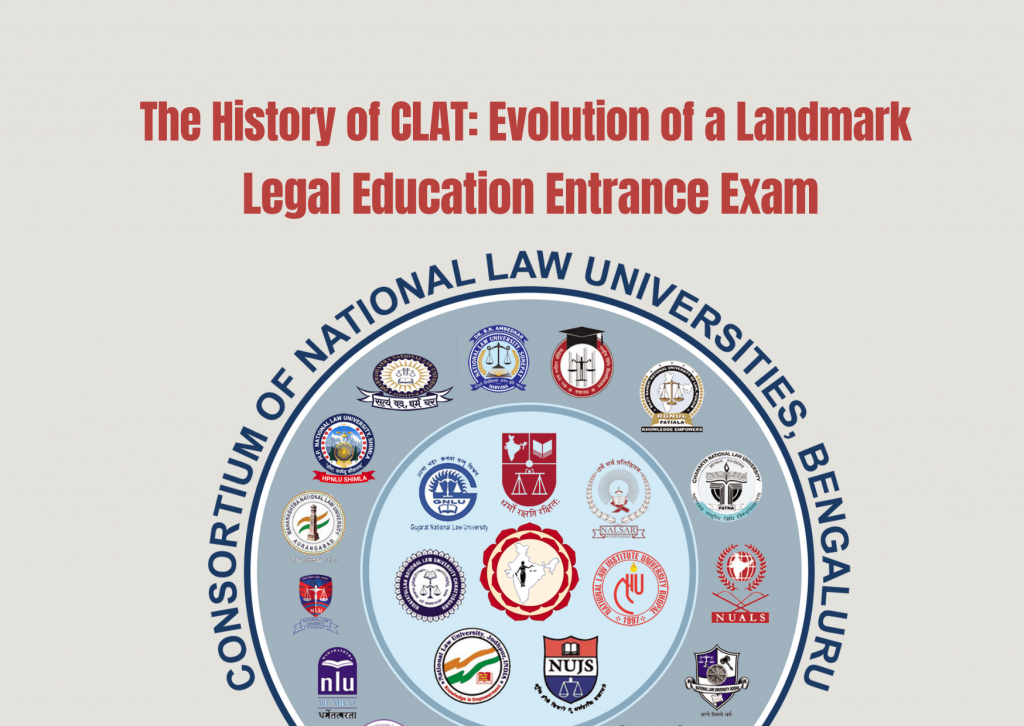The Common Law Admission Test (CLAT) has become one of the most sought-after entrance exams in India, allowing aspirants to gain admission to prestigious National Law Universities (NLUs) across the country.
Since its inception in 2008, CLAT has undergone several changes in terms of exam pattern, structure, and marking schemes. These changes reflect an ongoing effort to refine the assessment process and adapt to the evolving landscape of legal education.
1. The Inception of CLAT in 2008
Prior to 2008, each NLU in India conducted its own entrance exam, causing logistical challenges for aspirants who had to travel and prepare for multiple exams. To streamline the admission process, CLAT was introduced in 2008, with the aim of providing a unified exam for entry into NLUs. The exam, initially conducted by the National University of Juridical Sciences (NUJS), Kolkata, set a precedent for future legal entrance tests.
The inaugural CLAT exam in 2008 had the following pattern:
- Total Marks: 200
- Sections: English, General Knowledge, Elementary Mathematics, Legal Aptitude, and Logical Reasoning
- Number of Questions: 200
- Time Duration: 2 hours
The key highlight of the early CLAT exams was the emphasis on Legal Aptitude, which tested candidates on legal reasoning and basic legal principles, making it the most weighted section of the paper.
2. Changes in the Number of Questions
In the initial years, the number of questions in the CLAT exam remained consistent at 200, with each question carrying one mark. However, over time, feedback from students and educators highlighted that the large number of questions, combined with the two-hour time limit, placed an undue burden on students. There was a growing concern that students were prioritizing speed over comprehension and reasoning.
Recognizing the need for a change, in 2020, the CLAT consortium reduced the number of questions from 200 to 150. This allowed for a more balanced approach where candidates could focus more on critical thinking and analytical skills rather than racing against the clock.
3. Shift Towards Comprehension-Based Questions (2020)
One of the most significant changes in the CLAT exam pattern came in 2020 when the exam underwent a complete overhaul to make it more comprehension-focused. This shift was a response to the need for students to have a deeper understanding of concepts rather than relying on rote learning or factual recall.
Key Changes in the 2020 Pattern:
- The exam focused on comprehension passages across sections like English, Current Affairs, Legal Reasoning, and Logical Reasoning.
- Instead of direct questions, candidates were required to read passages and answer inference-based questions, which tested their analytical abilities, critical thinking, and reasoning.
- In the Quantitative Techniques section, questions were based on data interpretation and required candidates to analyze graphical data or charts.
This shift represented a significant departure from the earlier years when Legal Aptitude and General Knowledge sections included more fact-based or knowledge-intensive questions. The new pattern encouraged students to read and understand legal concepts or news in-depth, making it a more intellectually challenging exam.
4. The Role of Negative Marking
While negative marking has always been part of the CLAT exam pattern, its impact has grown with the introduction of fewer questions. In the early years of CLAT, each incorrect answer led to a deduction of 0.25 marks. While this remained consistent even with the 2020 changes, the importance of careful answering became more pronounced with the reduced number of questions. With only 150 questions, accuracy became even more crucial for securing a high rank, as every mark carried more weight.
The emphasis on negative marking encouraged candidates to develop a more strategic approach to the exam, focusing on questions they were more confident about and being cautious with educated guesses. This change in approach was especially important for sections like Legal Reasoning and Logical Reasoning, where a deep understanding of the passage was required to avoid mistakes.
5. The Introduction of Descriptive Sections (2014-2015)
For a brief period in 2014-2015, CLAT included a descriptive section where candidates had to write essays or long answers. This was introduced with the intention of testing candidates’ ability to articulate and present arguments coherently, a crucial skill for law students. However, this pattern was soon dropped as it was found to be logistically challenging and time-consuming to evaluate.
The return to the objective, multiple-choice format allowed for a more streamlined evaluation process, which was easier to implement given the growing number of applicants each year.
6. Fluctuations in the Difficulty Level
One of the most debated aspects of the CLAT exam over the years has been the fluctuating difficulty level. While the exam’s overall structure remained relatively consistent until 2020, the difficulty level of individual sections varied from year to year. For instance, the 2018 CLAT exam was considered particularly challenging, with many students finding the Logical Reasoning and Quantitative Techniques sections more difficult than in previous years.
In contrast, the 2019 exam was seen as relatively more straightforward, with easier English and Legal Reasoning sections. These fluctuations have made it crucial for students to prepare for a wide range of difficulty levels, ensuring they are adaptable on exam day.
7. Growing Importance of Legal Reasoning
Legal Reasoning has always been a key component of the CLAT exam, but its importance has grown over time, especially with the pattern changes in 2020. In earlier years, the Legal Aptitude section often included factual questions about the law, with students needing to memorize certain legal concepts. However, from 2020 onwards, the focus shifted more toward understanding and analyzing legal scenarios, rather than merely recalling information.
Candidates are now required to apply legal principles to hypothetical situations, testing their ability to reason logically through complex legal problems. This aligns with the skills that are necessary for success in law school and legal practice, making CLAT a more rigorous and relevant test for aspiring lawyers.
8. Impact of the COVID-19 Pandemic
The COVID-19 pandemic in 2020 also had a notable impact on the CLAT exam. The exam was delayed multiple times that year, and the shift to online modes of learning and test preparation added to the challenges faced by students. Additionally, there was speculation about whether the exam would move online, although it remained a pen-and-paper test in 2020.
The pandemic also reinforced the importance of adaptability for students, as uncertainty around the exam dates, changes in the test-taking environment, and shifting preparation strategies became common. The CLAT consortium has since streamlined the process to ensure that any future disruptions can be handled more smoothly.
9. Future Trends in CLAT
As legal education continues to evolve, there is a possibility that the CLAT exam pattern will undergo further changes in the coming years. There may be an increased emphasis on critical thinking, analytical skills, and a deeper understanding of legal and current affairs. The trend toward comprehension-based questions is likely to continue, as law schools seek candidates who can read, interpret, and analyze complex material.
Moreover, with the rise of online learning and testing technologies, there could be discussions about moving CLAT to an online format in the future. However, this would require careful consideration to ensure fairness and accessibility for all candidates.
Conclusion
The evolution of the CLAT exam pattern over the years reflects the broader changes in legal education and the skills required for success in the field of law. From a factual, knowledge-based test in its early years to a more comprehension-focused, reasoning-intensive exam today, CLAT has transformed into a rigorous assessment of a candidate’s intellectual capabilities.


